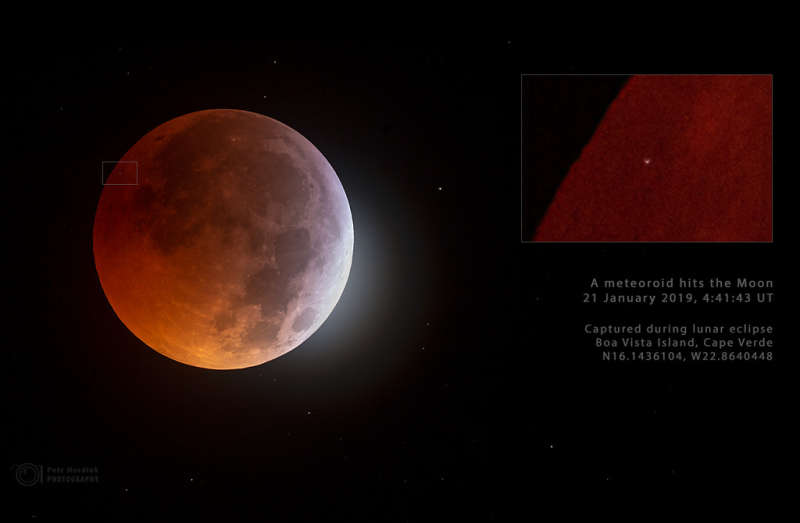
|
Credit & Copyright: Petr Horálek
Explanation:
Craters produced
by ancient impacts on the airless Moon have long been a familiar sight.
But only since the 1990s have observers began to
regularly record and study
optical flashes
on the lunar surface,
likely explosions resulting from impacting meteoroids.
Of course,
the flashes are difficult to see against a bright,
sunlit lunar surface.
But during the January 21 total eclipse
many
imagers
serendipitously captured a
meteoroid impact flash against
the dim red Moon.
Found while
examining images taken shortly before the total eclipse
phase began, the flash is indicated in the inset above,
near the Moon's darkened western
limb.
Estimates based on the flash
duration
recorded by the Moon Impact
Detection and Analysis System (MIDAS)
telescopes in southern Spain
indicate the impactor's mass was about 10 kilograms and created
a crater between seven and ten meters in diameter.
|
January February March April May June July August September October November December |
| ||||||||||||||||||||||||||||||||||||||||||||||||
NASA Web Site Statements, Warnings, and Disclaimers
NASA Official: Jay Norris. Specific rights apply.
A service of: LHEA at NASA / GSFC
& Michigan Tech. U.
Based on Astronomy Picture
Of the Day
Publications with keywords: total lunar eclipse - meteoroid
Publications with words: total lunar eclipse - meteoroid
See also:
